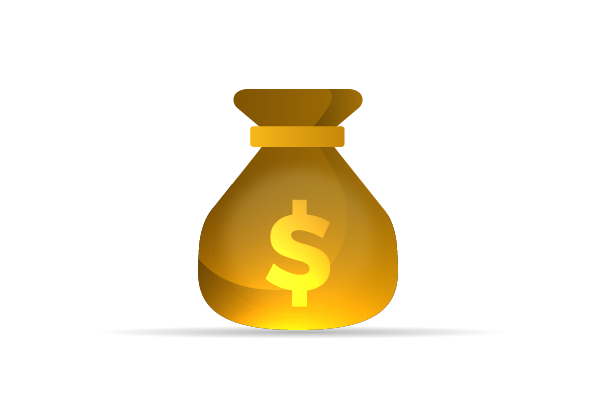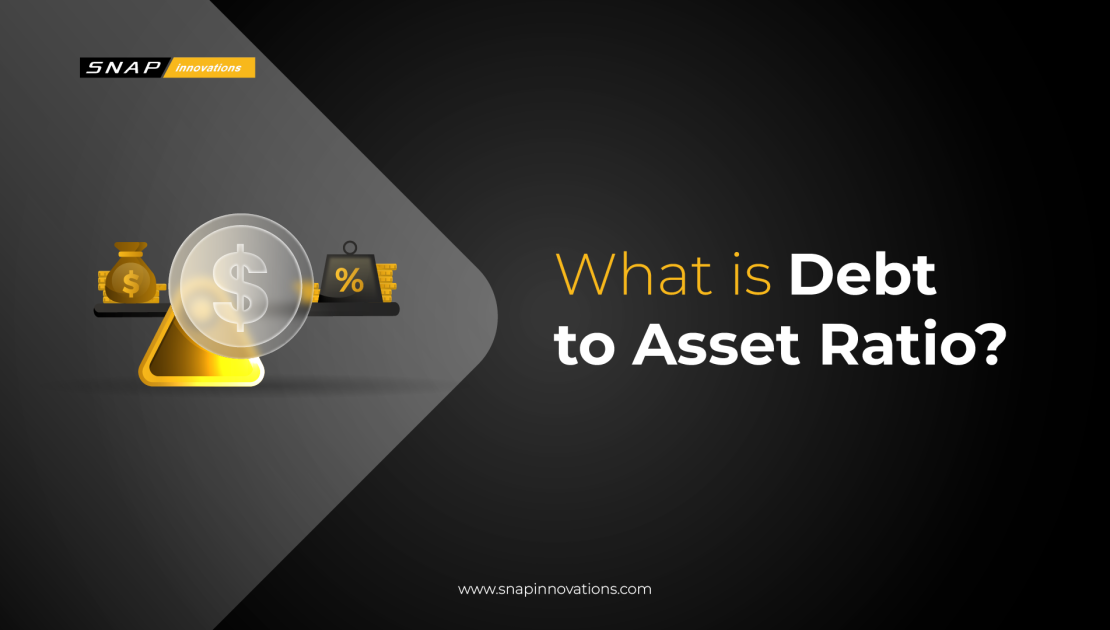The debt to asset ratio is an essential financial metric that measures the proportion of a company’s assets financed through debt. It’s a crucial indicator of the company’s financial leverage and stability. By calculating the total liabilities divided by the total assets, investors and analysts can gauge how much of the company’s assets are funded by debt, offering a clear picture of its financial health.
This ratio is particularly important as it not only reflects the company’s ability to cover its debts but also its risk level. A high debt to asset ratio might indicate that a company is heavily reliant on borrowing, which could be risky during economic downturns or when interest rates rise. Conversely, a low ratio suggests that the company is more financially stable and relies less on debt financing, potentially making it a safer investment.
Understanding and utilizing the debt to asset ratio can be a game-changer for investors, financial analysts, and business owners alike. For investors, it’s a vital tool to assess the risk and return of a potential investment. It helps in determining whether a company is managing its debt responsibly and whether it has the financial resilience to withstand economic challenges.
For business owners and managers, this ratio is pivotal in strategic decision-making. It informs them about the right balance between debt and equity financing, helping to optimize their capital structure for better financial performance and growth. In essence, the debt to asset ratio is not just a number on a balance sheet; it’s a powerful indicator of a company’s financial health and future prospects.
What is Debt to Asset Ratio?
 The debt to asset ratio is a fundamental financial metric that provides valuable insights into a company’s financial health. At its core, this ratio tells you the proportion of a company’s assets that are financed through debt compared to its equity. In simpler terms, it answers the question: “How much of the company’s resources are derived from borrowing versus its own investments?”
The debt to asset ratio is a fundamental financial metric that provides valuable insights into a company’s financial health. At its core, this ratio tells you the proportion of a company’s assets that are financed through debt compared to its equity. In simpler terms, it answers the question: “How much of the company’s resources are derived from borrowing versus its own investments?”
To calculate the debt to asset ratio, you need two key components: the total debt and the total assets. The formula is straightforward:
Debt to Asset Ratio
=
Total Debt
Total Assets
×
100
Debt to Asset Ratio=
Total Assets
Total Debt
×100
This formula yields a percentage that represents the ratio. For instance, if a company has $500,000 in total debt and $1,000,000 in total assets, the debt to asset ratio would be 50%, indicating that half of the company’s assets are financed through debt.
Read More: What is a Money Market Fund? Stability and Liquidity in Investments
Why Does the Debt to Asset Ratio Matter?
Now that we’ve clarified what the debt to asset ratio is, let’s explore why it’s such a critical metric. The debt to asset ratio serves as a reliable indicator of financial risk. In essence, it offers a snapshot of how much risk a company is taking on by relying on borrowed funds.
A higher debt to asset ratio indicates a riskier financial position for a company. This higher level of risk can be concerning for investors, creditors, and even the company itself. On the flip side, a lower ratio suggests that the company is in a more stable financial position. It signifies that a significant portion of the company’s assets is funded through its equity or retained earnings.
For investors, this ratio is invaluable as it helps answer pivotal questions such as, “Is this company carrying too much debt?” or “Is the company efficiently utilizing its assets to generate returns?”
The Significance of Debt to Asset Ratio in Investing
 Now that we’ve covered how to calculate the debt to asset ratio and why it’s vital, let’s explore the concept of the “Goldilocks Zone.” This zone represents the range of ratios that are neither too high nor too low, but just right.
Now that we’ve covered how to calculate the debt to asset ratio and why it’s vital, let’s explore the concept of the “Goldilocks Zone.” This zone represents the range of ratios that are neither too high nor too low, but just right.
A company’s debt to asset ratio can fall into one of three categories:
High Ratio
When a company’s debt to asset ratio is high (above a certain threshold), it can be a red flag. This suggests that the company has taken on significant debt to finance its operations, which can lead to higher financial risk. Investors may be wary of companies with excessively high ratios, as they might struggle to meet their debt obligations.
A high debt to asset ratio often indicates that a company is heavily leveraged, meaning it relies heavily on borrowed funds. While this can be a strategic move to fund growth or take advantage of investment opportunities, it can also be risky, especially if the company’s profitability and cash flow aren’t sufficient to cover its debt payments. Investors considering companies with high debt to asset ratios should conduct thorough due diligence to assess the company’s ability to manage its debt and generate sustainable returns.
Low Ratio
Conversely, a low debt to asset ratio indicates that the company is not heavily reliant on debt financing. While this can be seen as a sign of stability, it may also suggest that the company is not effectively leveraging its assets to drive growth. Companies with very low ratios might miss out on opportunities for expansion and higher returns.
Companies with low debt to asset ratios tend to have a stronger financial cushion and may be better equipped to weather economic downturns or unexpected challenges. However, it’s essential to consider the industry and competitive landscape when evaluating a low ratio. In some industries, a lower ratio may be the norm due to the nature of the business. Investors should analyze the company’s growth prospects and overall financial health to determine whether a low debt to asset ratio aligns with their investment goals.
Optimal Ratio
The “just right” zone, often referred to as the optimal or healthy range, strikes a balance between financial stability and growth potential. Finding this sweet spot can be challenging, as it varies by industry and company. It requires a careful assessment of the company’s financial goals, risk tolerance, and market conditions.
Investors seeking companies with an optimal debt to asset ratio aim to identify businesses that can manage their debt responsibly while capitalizing on opportunities for growth. Achieving this balance requires a deep understanding of the specific industry dynamics and the company’s competitive position within it. Companies in this category typically have a solid financial foundation, sufficient cash flow, and a manageable level of debt that allows them to thrive in both favorable and challenging economic environments. As an investor, aligning your risk tolerance and investment objectives with companies that fall within the optimal range can be a smart strategy for long-term financial success.
In essence, understanding this balance is essential for investors seeking companies with sustainable growth potential while managing risk effectively. The debt to asset ratio provides valuable insights into a company’s financial positioning and can be a pivotal factor in investment decision-making.
How Companies Use Debt to Asset Ratio
Companies also pay close attention to their debt to asset ratio, as it influences their ability to secure financing and make strategic decisions. Let’s explore some of the ways in which companies utilize this ratio.
Leveraging Debt for Growth
One common strategy for businesses is to use debt strategically to fund expansion or invest in new opportunities. This approach can be beneficial when the cost of borrowing is lower than the expected return on investment. By maintaining a balanced debt to asset ratio, companies can access the necessary capital to fuel growth without overburdening themselves with excessive debt.
For instance, a manufacturing company might take on debt to purchase new machinery that increases production capacity, leading to higher revenue. Similarly, a tech startup might secure financing to develop and market a breakthrough product. In both cases, the debt to asset ratio is a critical factor in assessing whether the potential benefits of borrowing outweigh the associated risks.
Maintaining Financial Flexibility
Another way companies use the debt to asset ratio is to maintain financial flexibility. By carefully managing this ratio, businesses can ensure they have the capacity to respond to unexpected challenges or opportunities. For instance, having a lower debt to asset ratio means a company has less financial leverage, reducing the risk of insolvency during economic downturns.
Additionally, a healthy ratio can enhance a company’s creditworthiness, making it easier to secure loans or credit lines when needed. Lenders and investors often view companies with a well-balanced debt to asset ratio more favorably because it demonstrates responsible financial management.
Investor Confidence and Market Perception
The debt to asset ratio also plays a role in shaping investor confidence and market perception. Companies with a reasonable and stable ratio are generally seen as less risky and more attractive investment options. This can translate into a higher stock price and a lower cost of capital.
Conversely, companies with a high debt to asset ratio may face challenges in attracting investors, as they may be concerned about the company’s ability to meet its debt obligations. Market perception can affect a company’s stock performance and access to capital, making the maintenance of an optimal debt to asset ratio a priority for many businesses.
Strategic Decision-Making
Lastly, the debt to asset ratio influences strategic decision-making within a company. It guides choices related to capital structure, dividend policies, and investment priorities. For example, a company with a low debt to asset ratio may choose to distribute more profits to shareholders as dividends, while a company with a higher ratio might prioritize reinvesting in the business to reduce debt and improve financial stability.
In conclusion, the debt to asset ratio is not just a number on a financial statement; it’s a critical tool that companies use to manage their financial health, seize growth opportunities, and navigate the complex world of finance. By understanding the implications of this ratio, businesses can make informed decisions that align with their long-term goals and the ever-changing dynamics of the market.
The Role of Debt to Asset Ratio in Personal Finance
 Understanding Your Personal Debt to Asset Ratio is key in managing your financial well-being. Just as companies use this metric to gauge their financial health, individuals can apply the same concept to assess their personal financial situation and make informed decisions.
Understanding Your Personal Debt to Asset Ratio is key in managing your financial well-being. Just as companies use this metric to gauge their financial health, individuals can apply the same concept to assess their personal financial situation and make informed decisions.
To calculate your personal debt to asset ratio, you’ll need to identify your total debts and total assets. Total debts encompass any outstanding liabilities you may have, such as credit card balances, mortgage loans, student loans, and car loans. On the other side of the equation, total assets encompass the value of your investments, savings, real estate, and other assets you own. By performing this calculation, you’ll obtain a percentage that reflects your personal debt to asset ratio. This ratio provides a clear snapshot of your financial situation and can guide your financial decisions.
Your personal debt to asset ratio serves as a vital gauge of your financial stability and risk level. A high ratio suggests that a substantial portion of your assets is financed through debt, which can lead to increased financial stress and higher interest payments. Conversely, a low ratio indicates that you’ve managed your debts effectively and have a more secure financial foundation.
Understanding your personal debt to asset ratio can help you make informed decisions about managing debt, saving for the future, and achieving your financial goals. Whether you’re looking to pay down debt, save for a major purchase, or plan for retirement, keeping an eye on your personal ratio is a valuable step toward achieving financial success and security.
How to Improve Your Debt to Asset Ratio
Improving Your Debt to Asset Ratio for a Stronger Financial Future involves taking proactive steps to enhance your financial well-being. Whether you’re an individual or a business entity, optimizing this critical metric can pave the way for greater financial stability and growth.
One strategy to consider is debt reduction. By actively paying down high-interest debts, you can decrease your total liabilities, ultimately lowering the numerator in your debt to asset ratio formula. This reduction in debt not only improves your financial health but also reduces the burden of interest payments, freeing up funds for other financial goals.
Read Next: 7 Types of Candlestick Patterns You Should Know
Additionally, you can work on increasing your total assets, which is the denominator in the ratio. This can involve saving more, investing wisely, and potentially acquiring income-generating assets. By growing your assets, you effectively expand the base against which your debt is measured, resulting in a lower debt to asset ratio.
Another approach is to use debt more strategically. Just as companies can leverage debt for growth, individuals can consider responsible borrowing for investments that are likely to yield higher returns than the cost of borrowing. This can include financing education to enhance earning potential, purchasing a home, or investing in a diversified portfolio.
Ultimately, the path to improving your debt to asset ratio varies depending on your unique financial circumstances and goals. It may involve a combination of debt reduction, asset accumulation, and prudent financial planning. By focusing on this important metric, you can set yourself on a trajectory toward a more secure financial future and increased financial freedom.
Conclusion
In conclusion, the debt to asset ratio is a critical metric that can benefit both individuals and businesses in making sound financial decisions. Whether you’re an investor looking to assess the risk associated with a company or an individual aiming to improve your financial health, understanding and monitoring this ratio is essential. Keep learning and continue adding to your financial knowledge, as it’s a valuable tool on the path to financial success.

